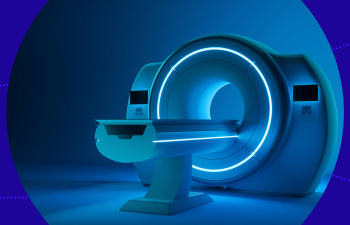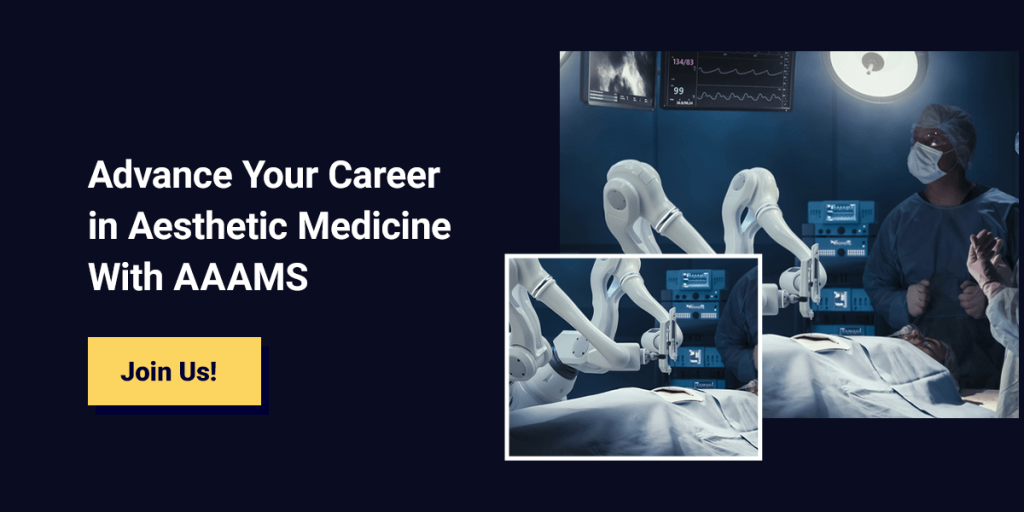The Future of Aesthetic Surgery: Trends and Innovations

The future of aesthetic or cosmetic surgery — regardless of what you want to call it — looks bright. These procedures aim to improve the appearance of patients’ faces and bodies, and the options are plentiful. Patients can undergo surgeries such as liposuction or facelifts. Alternatively, they can take more subtle approaches using lasers and injectables.
If you’re a health care practitioner wondering whether you should offer aesthetic procedures, there are a few factors to consider — including the current and future outlook of aesthetic surgery. You want to get your money’s worth while helping new potential patients.
The Current State of Aesthetic Surgery
In 2024, the global aesthetic surgery market size was valued at over $59 billion — and the number is growing. By the year 2032, it’s expected to reach over $81 billion. About $24 billion of that total may come from the U.S., and this number includes surgical and minimally invasive procedures.
To be human is to be imperfect. However, many people may feel that the person they are inside doesn’t represent them on the outside. This desire to improve one’s aesthetics is a key driver for the growth of aesthetic surgery. Another major driver is people looking for minimally invasive procedures to help them achieve their desired look.
Most Common Aesthetic Surgeries
According to the American Society of Plastic Surgeons (ASPS), the most popular cosmetic surgeries in 2023 included the following:
- Liposuction: Coming in first place for three years in a row, over 347,000 liposuctions were performed to help contour and define people’s bodies. This surgical procedure is popular for men and women.
- Breast augmentation: There were over 304,000 breast augmentations done. This number includes primary and revision implant placements. Although popular among female patients, male patients also opt for breast reduction.
- Tummy tuck: Tummy tucks have been in third place for three years in a row. They also saw an increase to over 170,000 procedures performed.
- Breast lift: Breast lift procedures saw a 7% annual increase. There were over 153,000 operations done, making it the second most popular breast procedure.
- Eyelid surgery: As the only surgery in the face cosmetics category, eyelid surgery has become 5% more popular since 2022. Over 120,000 operations were performed. Eyelid surgery is common among women and men.
Most Common Minimally Invasive Procedures
The ASPS also noted the following top minimally invasive aesthetic procedures of 2023:
- Neuromodulator injections: More commonly known as Botox, this procedure quickly earned the top spot. These injections saw a 9% increase from 2022, with over 9 million procedures done. These injections are the most popular procedure for female and male patients.
- Hyaluronic acid fillers: These injectables have been used over 5 million times. Their skin-replenishing effects are highly popular with neuromodulator injections.
- Skin resurfacing: From chemical peels to dermabrasions, skin resurfacing is making its mark. Over 3.5 million procedures were performed.
- Skin treatments: There was a 6% increase in skin treatments, which now account for over 3 million procedures. Skin treatments include a combination of lasers, from hair removal to leg vein treatments. Among these top five procedures, skin treatments are the second most popular among men.
- Lip augmentation: Over 1.4 million lip augmentations were performed to help enhance patients’ lips.
The Future Innovations of Aesthetic Surgery
With so much potential for growth, new tools and techniques will help shape the future of aesthetic surgery. Let’s discuss a few innovations to look out for.
Artificial Intelligence (AI)
AI is one of the most exciting trends in the field. AI systems can analyze patient data to predict outcomes. This ability is valuable, as it can help optimize surgical plans and even offer personalized treatment recommendations. Let’s take machine learning (ML) as an example.
ML can help professionals quickly assess a patient’s medical history, genetics and aesthetic goals to create tailored surgery plans. This technology can help improve precision and outcomes, especially in procedures like facelifts, rhinoplasties and body contouring.

3D Imaging and Simulation
3D imaging is also gaining traction in conjunction with AI. Patients increasingly want to see what they’ll look like after surgery before making a decision. Advanced 3D modeling software allows surgeons to create detailed models of a patient’s face or body.
This level of detail and visual feedback can give patients greater confidence and clarity when planning surgeries. Better planning beforehand may lead to better trust and satisfaction levels.
Minimally Invasive Techniques
Another major leap forward is the development of minimally invasive techniques. The demand for procedures with shorter recovery times and less visible scarring is growing. Examples of such treatments include laser technology, radiofrequency treatments and nonsurgical facelifts.
The benefit of achieving a desired look with minimal downtime expands one’s patient pool. It essentially opens new avenues for people who might have been hesitant to undergo invasive procedures in the past.
Robotics
Robotics in surgery is also a fascinating frontier. While robots aren’t performing surgeries independently, robotic-assisted devices are giving surgeons increased precision.
These machines can help with tasks like fat transfer, suturing or even reshaping tissue with high accuracy. The result? Less human error and more predictable, consistent outcomes.
Regenerative Medicine
Lastly, another area to watch is the use of regenerative medicine in aesthetics. Procedures that utilize stem cells and platelet-rich plasma (PRP) are becoming more common.
These treatments promote natural tissue regeneration, offering more natural results. This holistic approach will likely grow as patients seek more organic, sustainable aesthetic solutions.
How Do These Innovations Impact the Future of Aesthetic Surgery?
Each of these advancements in aesthetic surgery plays a role in creating a safer, more personalized experience. Here’s how they impact the field:
- AI: AI will help tailor surgeries to individual needs. It’ll also help with procedure planning and prediction, giving doctors and patients more confidence in the results.
- 3D imaging: This technology will change how patients make decisions. Visual results before surgery give them a clearer understanding of the outcome.
- Minimally invasive techniques: These methods will help with quicker recovery times and fewer scars. They open up aesthetic treatments to a broader audience — including those hesitant about traditional surgery.
- Robotic assistance: Robotic tools will impact procedure result consistency. They’ll help reduce human error and improve precision.
- Regenerative medicine: These new medicines offer more sustainable, long-lasting results.
Advance Your Career in Aesthetic Medicine With AAAMS
Staying ahead of the curve is essential for professionals who want to provide their patients with the best care and results. Medical professionals can advance their careers with comprehensive aesthetic surgery courses — from Botox Training to Facial Aesthetics 101.
Are you a medical practitioner interested in aesthetic surgical and minimally invasive procedures? Consider completing a relevant course offered by the American Association of Aesthetic Medicine and Surgery (AAAMS). Some of our courses are continuing education (CE) and continuing medical education (CME) certified.
We’ve been dedicated to training medical practitioners in the art of aesthetic medicine and noninvasive surgery since 2006. Ready to take your career to the next level? Register for one of our courses today and join the thousands of professionals who trust AAAMS.
Posted on behalf of
640 South San Vicente, Suite 410
Los Angeles, CA 90048
Phone: (310) 274-9955
info@aaams.net
Monday - Friday 9:00 AM – 5:00 PM

